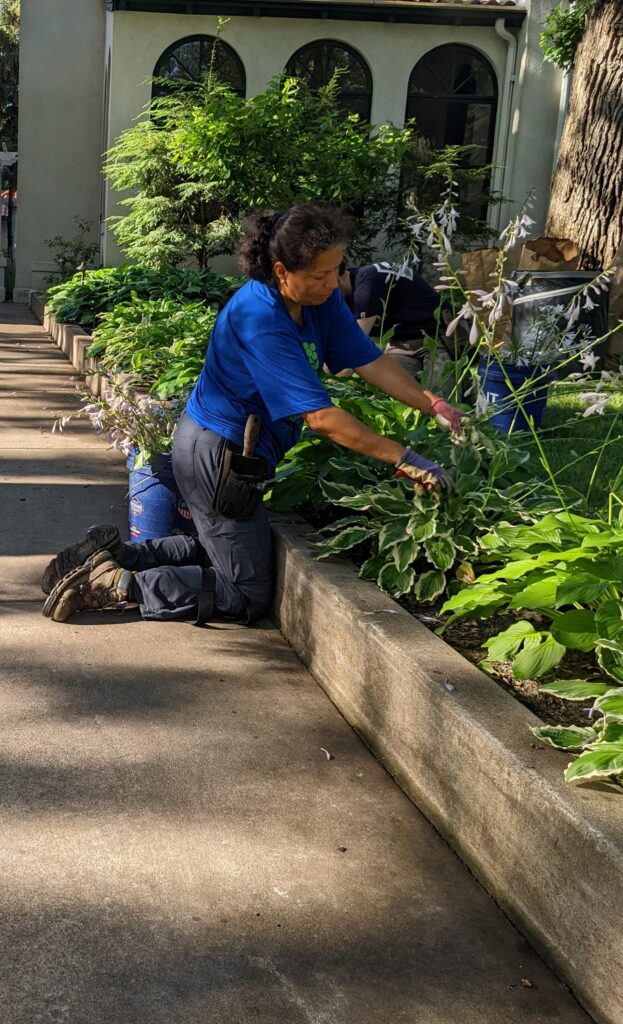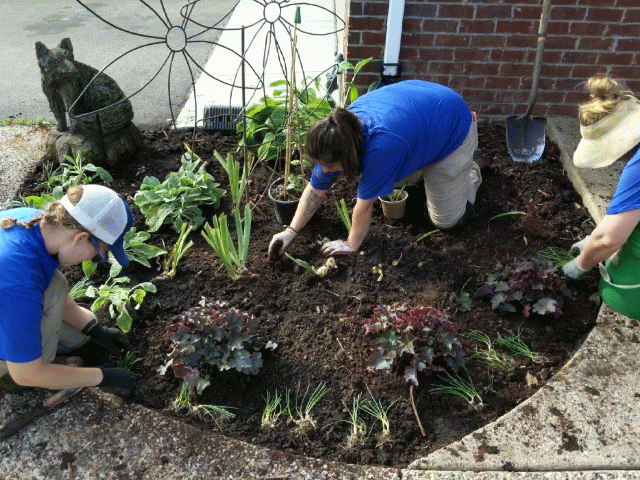Now that your plants are in and looking gorgeous, what do you need to do to keep them looking great now and into the future? A few simple tasks will ensure that they are thriving for years to come!
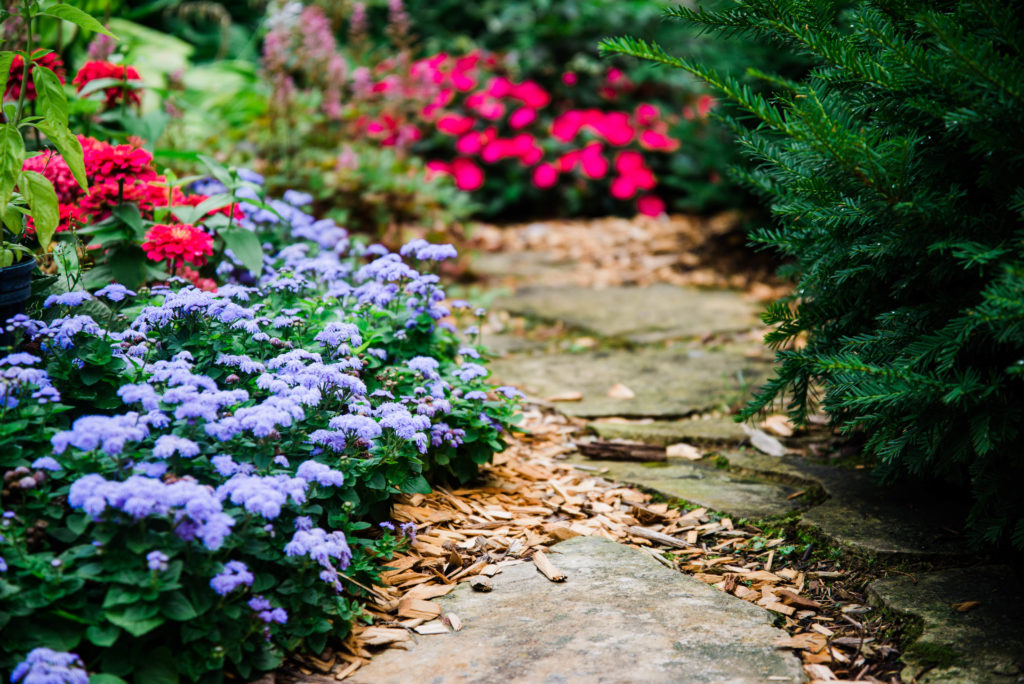
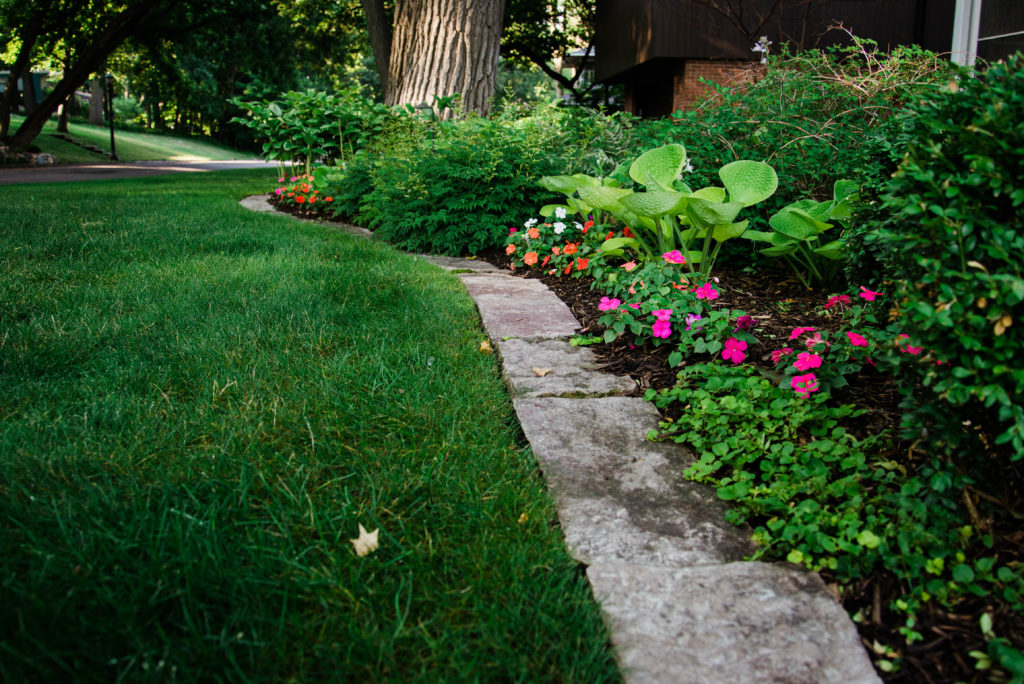
Fertilizing/Soil Amendments
During the installation process we utilize compost to amend the soil in and around the new plants and we also add fertilizer specific to the needs of the plants being installed. We do this to give each plant a boost and help it recover from transplant shock that often occurs when a nursery grown plant is transplanted into the ground. New plants should not need additional fertilizer beyond this during their first year.
Watering
Watering is the most important care task for a newly planted garden. Adequate water reduces transplant shock, which can be the difference between your garden thriving and your plants dying off. When we are installing plants, we will give everything a good soak to get things started. After that initial installation, you will want to water daily for the first week, every other day for the next week, and then 2 or 3 times per week for about a month after that. Additional watering may be needed during periods of drought and extreme heat.

Why water so much?
Frequent watering immediately following installation reduces the stress on the plants that they experience with transplant shock. Imagine the root ball is 25% of the plant, and it is responsible for uptake of water to hydrate the other 75% of the plant. That's a big responsibility, and it's already under a lot of stress from being transplanted!
Do I need to water forever?
Tapering off the watering over time encourages the roots to grow deeply to improve the stability of the plant and to help it endure in drought conditions. In ideal conditions, after your plants are established, they will not require additional watering beyond what the rest of your garden and yard needs. Plants are considered “established” after their root system has developed to match the herbaceous structure that exists above ground, usually after they've survived their first winter or 3 months of the growing season.
How do I know my plants need water?
If you can't detect soil moisture two inches or so beneath the soil surface, your plants need water. Wilting of leaves and stems can be another indicator that your plants need water. Checking the weather can help determine the potential frequency needed.
How to water
The goal of watering is to get the ground evenly moist around all your new plants, without creating puddles or soggy areas. A slow trickle of water at the base of new shrubs and trees can be a simple way to get them watered deeply, while a sprinkler or drip irrigation line around a large area of perennials may be the more effective way to cover a large area. Hand watering with a watering can or hose is great, being sure to give each plant sufficient water to soak into their root balls without over-saturating the area. Standing water or puddles that don't disappear within a few seconds are signs that the ground is saturated.
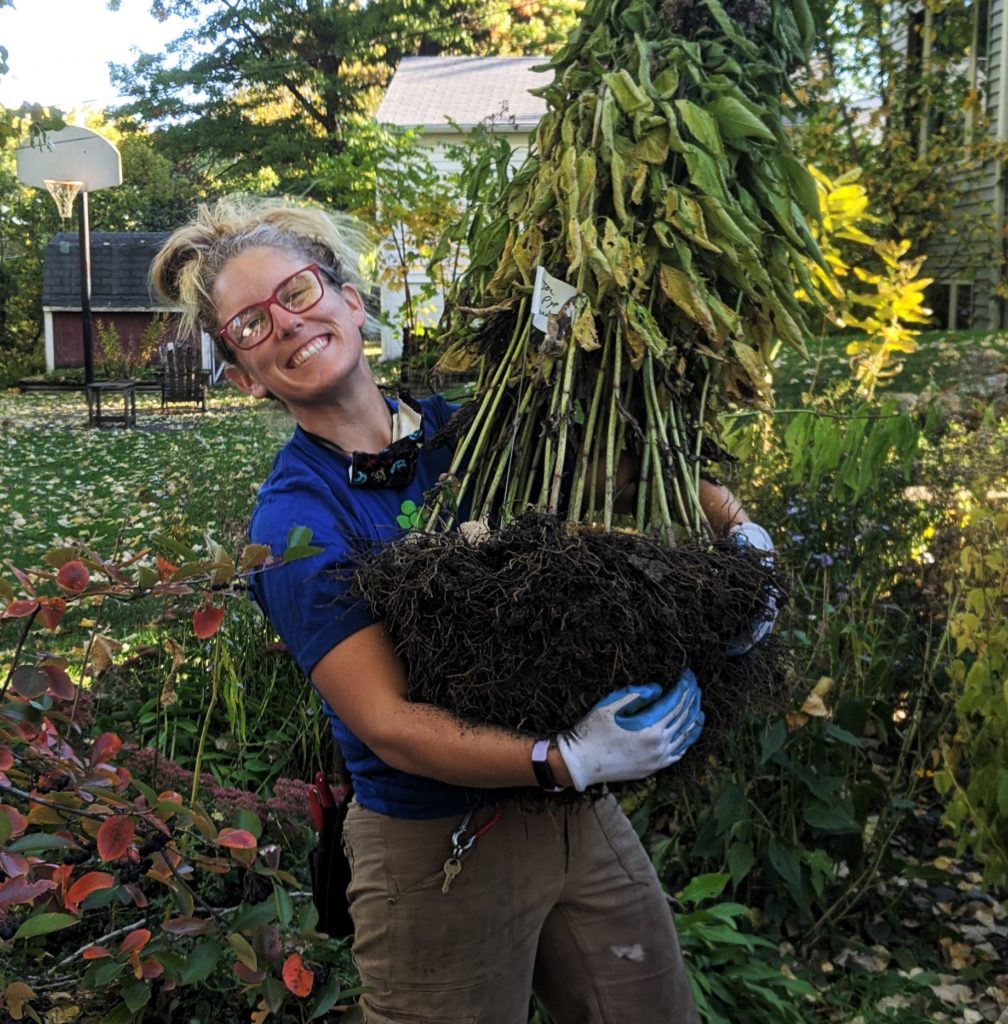
Transplants
Depending on the plant and the time of year the plants are transplanted, they may have a harder time recovering. We want the plant to focus its energy on its root systems to become reestablished. Because of this, sometimes we will remove the foliage so that it does not have to waste energy recovering both foliage and root systems. Sometimes we will leave the foliage. If after a week or so, the foliage has not recovered you can go ahead and cut it back so it can focus on its roots. The plant will come back the following spring with new leaves.
Things to Watch Out For
If your new plant is struggling, you may notice the leaves wilting and not perking back up with a good soak of water. A majority of the leaves turning yellow or brown and dying is not a good sign unless it’s during their normal life cycle. You should not see roots above the soil. This may be a sign that it is not being watered deep enough and they are seeking shallow water sources or that the topsoil has been washed away, leaving the roots vulnerable and without adequate nutrients. If you are not sure, give us a call and we’ll take a look to access the health.
Remember, depending on when during the season things are installed, your plants may be in different stages of development. Ex: If you plant Lamb’s Ear in August, you will not see blooms as it has already bloomed for the season. Plants may already be deadheaded, or if planted too late in the season, may not bloom at all – even if they generally bloom in the fall.
Maintaining Your New Garden
We offer customized Maintenance Plans to care for any of your flower, shrub, or veggie beds with the long-term health and vitality of your gardens at the forefront. Our Maintenance services cover the year-round needs of your garden including fertilizing, deadheading, pinching and shearing, pruning, and editing, in addition to weeding and removing debris. Please inquire for more information regarding this service.
If you decide to do the maintenance yourself, make sure you familiarize yourself with the specific needs of your individual plants. Each plant will likely require slightly different care throughout the season to keep it in optimal health and beauty. You can read up on specialized garden care tasks by checking out our blog here!
